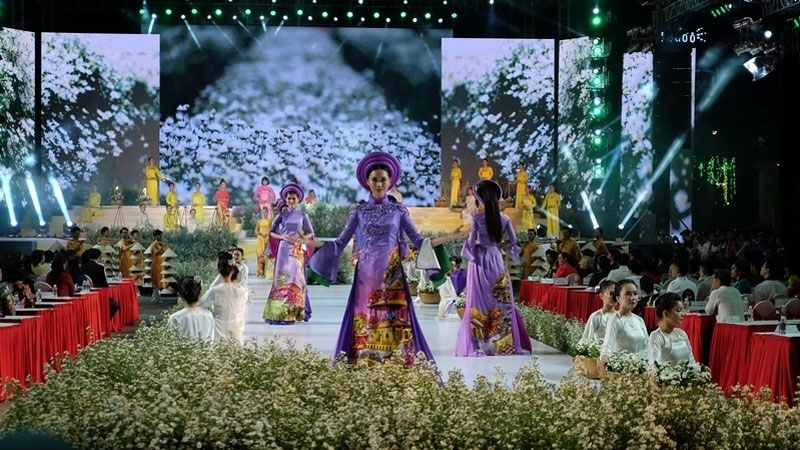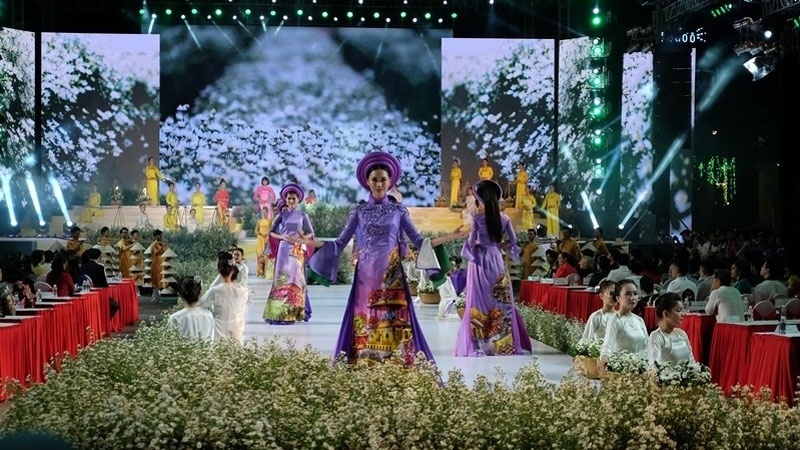
A festival of ao dai, the national dress of Vietnamese women, kicked off on March 2 at the Nguyen Hue pedestrian street in downtown Ho Chi Minh City.
The opening ceremony
of the ao dai festival in Ho Chi Minh City.
On the opening night, the audience were treated to 15 unique ao
dai collections created
by renowned Vietnamese designers as well as several from the
Republic of Korea, who are the first foreign designers to appear at the event.
Running for two weeks, the
festival will feature an ao dai performance contest, an ao
dai parade, an online photo contest on the theme of ao dai sand
a drawing competition on ao dai, among others.
The activities will take
place at various locations throughout the city including Nguyen Hue and Bui
Vien pedestrian streets of, the Youth Cultural House, the Women Cultural House,
the War Remnants Museum, the City Post Office and other institutions.
With the participation of
hundreds of ao dai tailors and shops, the festival is expected
to showcase the outstanding beauty of ao dais to both local
residents and visitors.
In his speech at the opening
ceremony, HCMC Vice Chairman Le Thanh Liem stated that the festival will offer
the public and visitors an enjoyable experience about the beauty of Vietnamese
culture.
The festival is scheduled to last until March 17.
Source: NDO
The People’s Committee of Lac Son district held a ceremony on April 28 to receive the provincial relic certificate for the ancient rock carving site at Suoi Co stream, located in My Thanh commune.
A special music show titled "The country is in the fullness of joy” has been held at Hoa Binh Square in Hoa Binh city in celebration of the 50th anniversary of the liberation of the South and national reunification (April 30, 1975–2025).
The People's Committee of Lo Son commune, Tan Lac district, has organised the local annual traditional stream fishing festival on April 19 - 20.
As a land deeply intertwined with human history and Vietnam’s millennia-long journey of nation-building and defence, Hoa Binh is often revered for its epic tales and legends.
Residents of Hoa Binh boast a rich cultural identity, reflected in their unique language, traditional attire, customs, and folk melodies – described as "sweet as honey, clear as a mountain stream.”
Lac Son district’s Vu ban town held the 2025 Truong Kha temple festival on April 12–13 (the 15th–16th days of the third lunar month). Since its revival in 2019, the festival has been organised every three years, preserving valuable intangible heritage while meeting the community’s cultural and spiritual needs.



